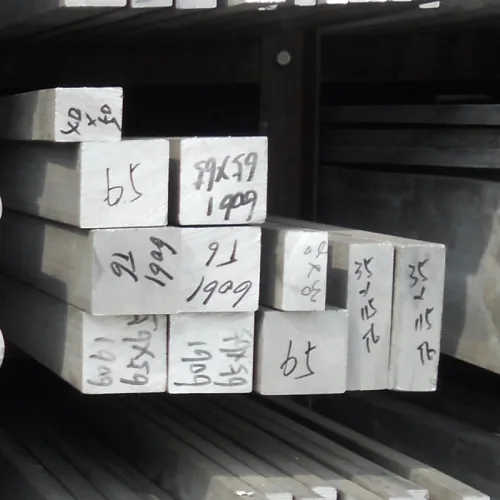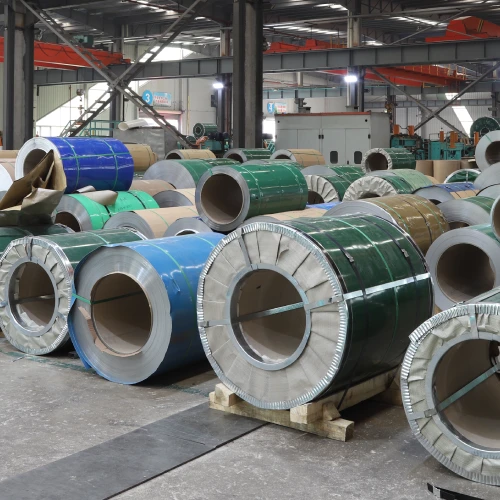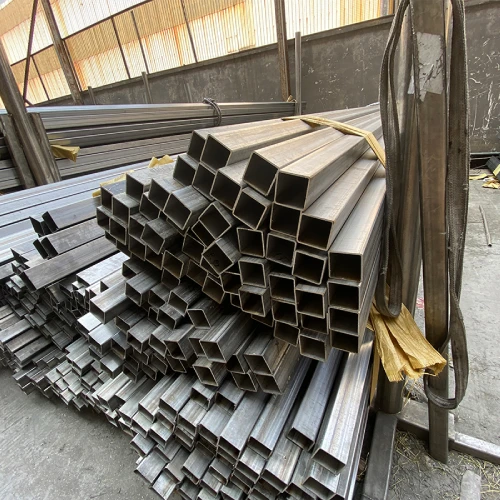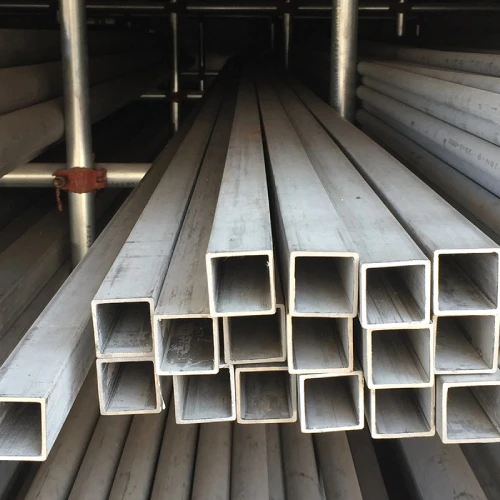Composition and Characteristics
The performance of 301 stainless steel is a result of its carefully balanced chemical composition, which typically includes:
Chromium (Cr):16-18%
Nickel (Ni):6-8%
Carbon (C):0.15% max
Manganese (Mn):2% max
Silicon (Si):1% max
Phosphorus (P):0.045% max
Sulfur (S):0.03% max
The high chromium and nickel content in 301 stainless steel provides excellent corrosion resistance in a variety of environments. Additionally, the material can be easily formed into various shapes and sizes, making it a popular choice for manufacturing and construction industries. The ability to increase its strength through cold working is one of the most notable features of 301 stainless steel, allowing it to achieve a wide range of mechanical properties depending on the specific needs of the application.
Key Properties
301 stainless steel bar is valued for several key properties that make it an exceptional material for many industries:
High Strength and Work Hardening:301 stainless steel can be significantly hardened through cold working, which increases its tensile strength and toughness. This makes it ideal for applications where high strength is essential.
Excellent Corrosion Resistance:The alloy offers good corrosion resistance in a variety of environments, particularly in mild to moderately corrosive conditions. It is well-suited for applications where exposure to moisture or chemicals is common.
Superior Formability:301 stainless steel is highly formable, allowing it to be easily shaped, bent, or drawn into various configurations without compromising its structural integrity. This makes it a versatile choice for complex manufacturing processes.
Good Weldability:The material can be welded using most standard welding techniques, making it suitable for applications that require strong, reliable joints.
Non-Magnetic in Annealed Condition:301 stainless steel is non-magnetic when annealed, but it can become slightly magnetic when cold worked, which may be advantageous in certain applications.
Applications of 301 Stainless Steel Bar
Due to its combination of strength, corrosion resistance, and formability, 301 stainless steel bar is used in a wide range of applications across various industries, including:
Automotive Industry:301 stainless steel bars are used in the automotive industry for components such as springs, fasteners, and structural parts, where high strength and durability are required.
Aerospace Industry:The material is employed in the aerospace sector for components that need to withstand high stress and harsh environments, such as aircraft frames, landing gear, and other structural elements.
Construction and Architecture:301 stainless steel is used in construction and architectural applications, including support structures, handrails, and decorative elements, where both strength and corrosion resistance are important.
Industrial Equipment:The alloy is commonly used in the manufacturing of industrial equipment, such as conveyor belts, clamps, and brackets, where its ability to withstand heavy loads and resist wear is essential.
Consumer Goods:301 stainless steel is also used in the production of consumer goods, including kitchen utensils, cutlery, and appliances, where a combination of strength, corrosion resistance, and aesthetic appeal is desired.
Advantages of Choosing 301 Stainless Steel Bar
When selecting a material for your project, 301 stainless steel bar offers several compelling advantages:
High Performance:The ability to increase strength through cold working allows 301 stainless steel to meet the demands of even the most challenging applications, providing long-lasting performance.
Versatility:With its excellent formability, corrosion resistance, and weldability, 301 stainless steel bar is suitable for a wide range of industries and applications, offering flexibility in design and manufacturing.
Durability:The alloy’s high tensile strength and resistance to wear ensure that components made from 301 stainless steel bar have a long service life, reducing the need for frequent replacements and maintenance.
Cost-Effective:301 stainless steel provides a cost-effective solution for many applications, offering a balance of performance and affordability that makes it a popular choice across various sectors.
Conclusion
301 stainless steel bar is a high-strength, versatile material that offers excellent corrosion resistance, durability, and formability. Whether you are working in the automotive, aerospace, construction, or consumer goods industries, 301 stainless steel bar provides the performance and reliability you need for a wide range of demanding applications. Explore our selection of 301 stainless steel bars today and discover the ideal solution for your next project.
Common surfaces

Stainless Steel Standards Comparison Table
| STS | USA | UNS | CHINA | EURONORM | RUSSIA | SWEDISH | JAPANESE | |
|---|---|---|---|---|---|---|---|---|
| GRADE | AISI/ASTM | NO | GB | NO | NAME | GOST | SS | JIS |
| 201 | 201 | S20100 | 12Cr17Mn6Ni5N | 1.4372 | - | - | - | SUS 201 |
| 301 | 301 | S30100 | 12Cr17Ni7 | 1.4310 | X 12 CrNi 17 7 | - | 2331 | SUS 301 |
| 303 | 303 | S30300 | 1Cr18Ni9MoZr | 1.4305 | X 10 CrNiS 18 9 | - | 2346 | SUS 303 |
| 304 | 304 | S30400 | 06Cr18Ni9 | 1.4301 | X 6 CrNi 18 10 | 08KH18N10 06KH18N11 |
2332 | SUS 304 |
| 304L | 304L | S30403 | 022Cr19Ni10 | 1.4307 | X 3 CrNi 18 10 | 03KH18N11 | 2352 | SUS 304L |
| 316 | 316 | S31600 | 0Cr17Ni12Mo2 | 1.4401 | X 6 CrNiMo 17 12 2 | - | 2347 | SUS 316 |
| 316L | 316L | S31603 | 022Cr17Ni12Mo2 | 1.4404 | X 3 CrNiMo 17 12 2 | - | 2348 | SUS 316L |
| 316Ti | 316Ti | S31635 | 0Cr18Ni12Mo2Ti | 1.4571 | X 6 CrNiMoTi 17 12 2 | 08KH17N13M2T 10KH17N13M2T |
2350 | - |
| 321 | 321 | S32100 | 0Cr18Ni11Ti | 1.4541/1.4878 | X 6 CrNiTi 18 10 | 12KH18N10T | 2337 | SUS 321 |
| 347 | 347 | S34709 | 0Cr18Ni11Nb | 1.4550 | X 6 CrNiNb 18 10 | - | 2338 | SUS 347 |
| 309S | 309S | S30908 | 0Cr23N13 | 1.4833 | X 6 CrNi 22 13 | 20KH23N18 | - | SUS 309S |
| 310S | 310S | S31008 | 06Cr25Ni20 | 1.4842 | X 6 CrNi 25 20 | 20KH25N20S2 | 2361 | SUS 310S |
| 416 | 416 | S41600 | Y1Cr13 | 1.4005 | X12CrS13 | - | 2380 | SUS 416 |
| 2205 | 2205 | S32205/S31803 | 00Cr22Ni5Mo3N | 1.4462 | X2CrNiMoN22-5-3 | 02Ch22N5AM2 | 2377 | SUS 329J3L |
| 2507 | 2507 | S32750 | 00Cr25Ni7Mo4N | 1.4410 | X 2 CrNiMoN 25-7-4 | - | - | - |
| 904L | 904L | N08904 | - | 1.4539 | - | - | - | - |
| 254SMO | 254SMO | S31254 | - | 1.4547 | X1CrNiMoCuN20-18-7 | - | 2378 | - |
| 253MA | 253MA | S30815 | - | 1.4835 | X9CrNiSiNCe21-11-2 | - | 2368 | - |
| 17-4PH/630 | 17-4PH/630 | S17400 | 0Cr17Ni4Cu4Nb | 1.4542 | X5CrNiCuNb16-4 | 05Ch16N4D2B | - | SUS630 |

 301 stainless steel bar is a highly versatile and durable material that offers excellent mechanical properties, making it ideal for a wide range of applications. As part of the austenitic stainless steel family, 301 stainless steel is known for its high strength, corrosion resistance, and exceptional formability.
301 stainless steel bar is a highly versatile and durable material that offers excellent mechanical properties, making it ideal for a wide range of applications. As part of the austenitic stainless steel family, 301 stainless steel is known for its high strength, corrosion resistance, and exceptional formability.  AISI 303 Stainless Steel Coil SUS303 1.4305
AISI 303 Stainless Steel Coil SUS303 1.4305
 AISI 321 Stainless Steel Plate SUS321 1.4541
AISI 321 Stainless Steel Plate SUS321 1.4541
 AISI 430 Stainless Steel Tube SUS430 1.4016
AISI 430 Stainless Steel Tube SUS430 1.4016
 2205 Stainless Steel Tube S32205 1.4462
2205 Stainless Steel Tube S32205 1.4462
 AISI 301 Stainless Steel Coil SUS301 1.4319
AISI 301 Stainless Steel Coil SUS301 1.4319
